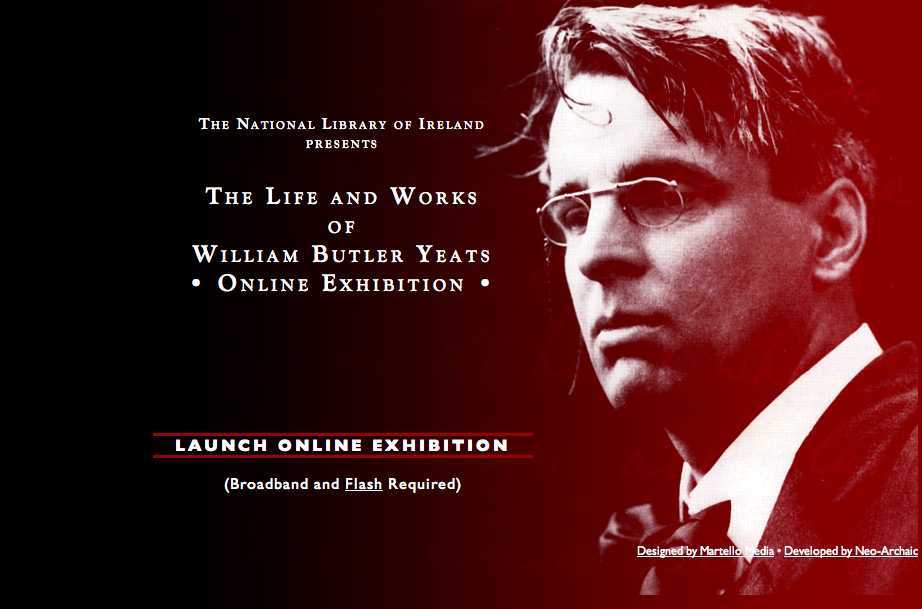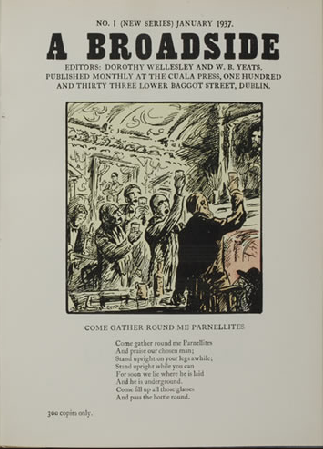
Image Credit: Screen Shot from the National Library of Ireland
While conducting research on W.B. Yeats I encountered this
fascinating online exhibition from the National Library of Ireland that raised
interesting questions for me about the relationship between visual rhetoric and
literary archives. Like many other
graduate students teaching rhetoric while writing a dissertation on literature,
I often wonder about the interconnections between the two fields and what ideas
crossover and what do not. Yeats,
in many ways, seems like the perfect place to start to blur lines between the
rhetorical, the literary, the visual and the auditory. Navigating this website, I was struck
by the extent to which the virtual museum brings together these fields and makes
visible Yeats’s complicatedly interdisciplinary and multi-sensory career.
This exhibition includes virtual rooms recreating spaces
that Yeats inhabited, display cases with clickable first editions and
manuscripts, videos with scholarly commentators discussing Yeats’s biography
and works and images of various artifacts displayed in the collection. One of
the advantages of the online exhibition is that the viewer can virtually turn
pages of documents that would otherwise be static in the display cases. In this manner, I was able to leaf
through a few pages of a first edition without having to visit the archive.

Image Credit: Screen Shot from the National Library of Ireland
The exhibit also displays a few instances of visual literary
criticism, such as a compelling chart that tracks the composition of Yeats’s The Tower. By clicking on
the icon of a single poem, the display highlights a line tracking the
publication history. Three
poems—“Nineteen Hundred and Nineteen,” “Leda and the Swan” and “Sailing to
Byzantium”— are linked to auditory commentary on Yeats’s extensive revision
process.

Image Credit: Screen Shot from the National Library of Ireland
In many respects, the strategies of this exhibition are
similar to those in Yeats’s broadsides.
In these broadsides, published by the Cuala Press, Yeats included visual
prints, poetic text and sheet music to combine different sensory experiences in
works that were, on several levels, blurring the tenuous lines between rhetoric
and art.
Comments
Revision and visual archives
Hi Emily,
Thanks for such a wonderful post. One of the things that I enjoyed so much about the site you pointed us toward is the way in which the creators have allowed access to so many of Yeats' drafts with notes all over each. I always wish I had time to build into my syllabus a trip over to the HRC to have my students look at the messy writing processes of some of the "greats." I like to emphasize that revision takes time and that writing is not a process that just flows naturally to even the most famous authors. The site you've pointed out makes it easier to make this point because it allows students to see the visual nature of his/the writing process as process without the hassle of losing a whole day to a field trip to the archive.